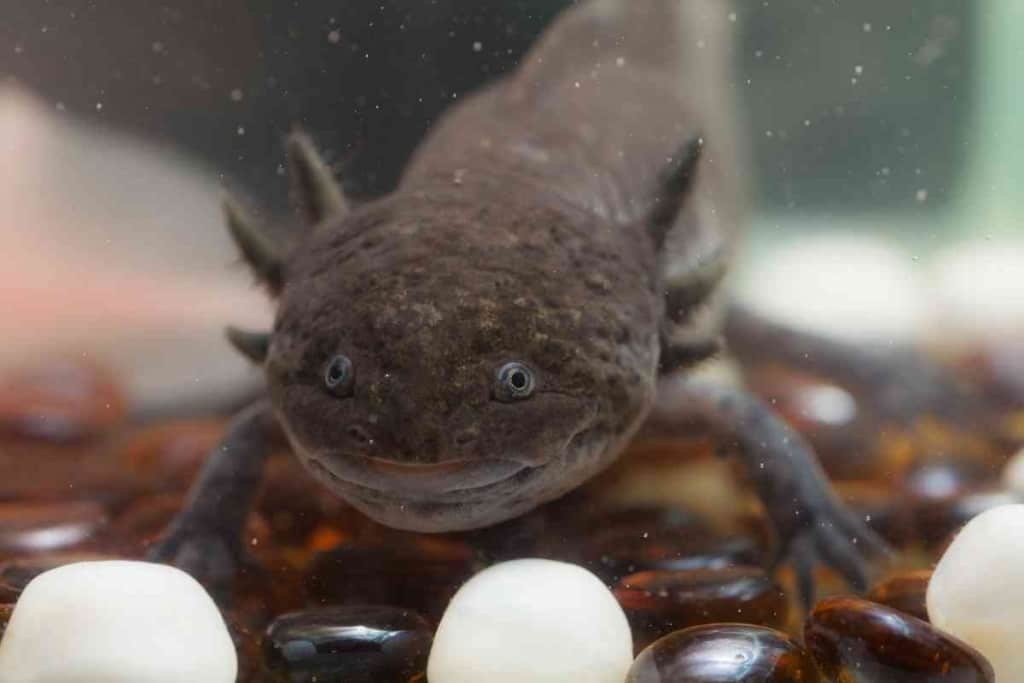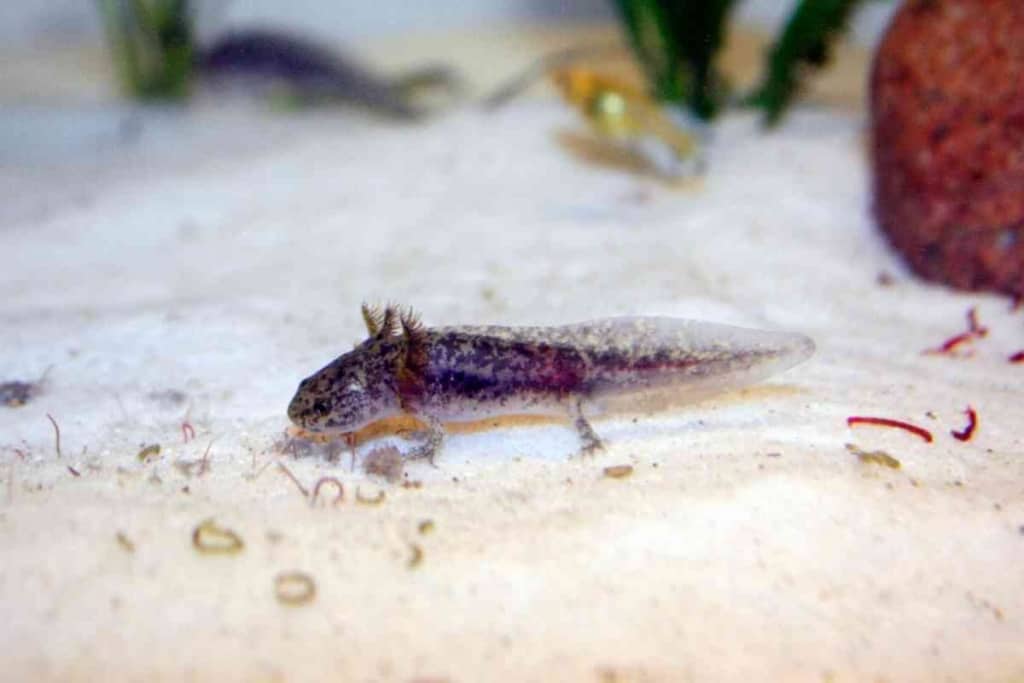Do Axolotls Eat Their Babies? Why And How To Stop Them!
Axolotls, with their serene appearance, raise an intriguing question: do they consume their own offspring? This article dives deep into the behaviors and instincts of axolotls concerning their young. If you’re curious about the parental side of these aquatic creatures, this is a must-read.
Do axolotls eat their babies?
Adult axolotls will almost always eat their eggs and hatched offspring if kept in the same tank together. Regardless of whether or not you feed your axolotl plenty of high-quality food, they will almost always eat their own babies unless you separate them early.
Oddly and woefully, axolotl parents can and will eat their babies while still inside their eggs. Let’s find out why and how to prevent this from happening if you are breeding axolotls.

Why Do Axolotls Eat Their Babies?
Axolotls are not exactly parents of the year in the amphibian world. They naturally do not care about their babies and will see them as food if they do not have another nourishment source. If the eggs or the hatched baby axolotls are in the same tank as their parents, they will inevitably and eventually eat them.
These salamanders are carnivores and like to feast on earthworms, crustaceans, and other meat sources. They prefer to eat anything meat-based that looks like a good food source that can also fit easily into their mouth.
Axolotl baby eggs are about half an inch around, which is easy enough for parent axolotls to fit in their mouths. Since axolotls do not mind eating their babies, this must make them carnivores.
So if you are an axolotl breeder, how do you prevent the parents from eating their babies? Let’s take a look.
How to Prevent Axolotl Parents From Eating Their Babies
After the male and female axolotls have courted, watch for the female to lay eggs on the surface of the aquarium glass—anywhere between 12 hours to a couple of days after mating with her partner. Once you see the eggs, you can do one of two methods to protect the spawn from their parents eating them.
Separate the adult axolotls from their eggs by placing the adults into a new tank. Leave the eggs where they were laid until they hatch within the next couple of weeks.
Alternatively, you can place a strong barrier in front of where the eggs are laid so that the axolotl adults cannot get to their babies to feast on them. Assure that you give the parents enough food throughout the day, so they do not attempt to break down the barrier to get to the eggs.
The best bet would be to house the adults and the eggs separately from one another. Once the eggs hatch, you will have to separate them into smaller groups in different aquariums depending on how many eggs mommy axolotl laid.
How Many Eggs Can a Female Axolotl Lay?

Female axolotls can lay at least 1,000 eggs at a time after they have spawned with a male. They can lay 300 eggs on average. They can breed and lay eggs for as much as they want right after a previous breeding session.
If you find that the male and female are breeding more eggs than you can handle, have them live in separate habitats for a while. Since they are an endangered species, it’s best to take care of the babies to reassure the parents not to eat them so that the posterity can thrive for future generations.
How Long Do Axolotl Babies Take to Hatch?
The water temperature in the aquarium tank and the axolotl’s overall genetics determine how long it will take for the eggs to hatch.
If you keep the aquarium water between 68 degrees Fahrenheit to 72 degrees Fahrenheit, axolotl babies can hatch within a couple of weeks. However, any temperature under this range can cause the babies to take longer to hatch, about 20 or more days.
How Many Axolotl Babies Should Live In One Tank?
Axolotl eggs need at least a 20-gallon tank to thrive and hatch on-time with no issues. About 100 hatched baby axolotls can live in one 20-gallon tank at one time, as 200 babies should not be in that small of a tank.
Once axolotls hit the juvenile stage, which is when they measure about two and a half inches to four inches long, they should not be kept in the tank together.
They can exhibit cannibalism towards each other as they start to eat a larger carnivorous diet than when they first hatched.
Have a room designated for the separate tanks of axolotl juveniles. Keep them away from other larger animals, such as dogs or cats, if you have them in the home.
Start selling them to potential pet owners interested in owning an axolotl to free up space in case a new set of axolotl eggs hatch amongst the breeding male and female.
Cautions For Housing Baby Axolotls Together
As the baby axolotls get larger, evaluate their sizes. Larger babies will likely become predators of the smaller ones as they can fit them into their mouths.
House 50-100 axolotls that are about the same size in one 20-gallon tank. Monitor their sizes over time so you can switch the babies into different tanks as needed.
Once the axolotls reach adulthood, they should have their tanks or live with one partner only. Axolotls are not a social species, much like other aquatic animals such as dolphins or whales.
An adult axolotl needs at least a 20-gallon tank, while two axolotls living in one tank need at least a 40-gallon one to be content and thrive accordingly.
Babies can live in 20-gallon tanks together because of their very small size. They are about half an inch long when they are first hatched.
Final Thoughts
Axolotl parents eat their eggs if they are in the same tank and hungry in between regular meal feedings. If you want to preserve the axolotl eggs, house the adults and the babies in separate tanks.
While overseeing a new batch of axolotl babies can be time-consuming, enlist the help of a trusted family member or friend who is also an axolotl enthusiast willing to help you out.
